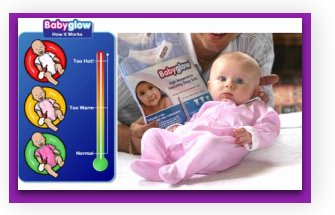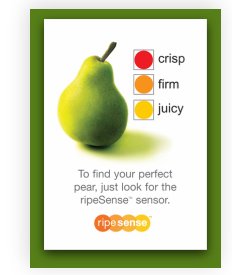How to find Ideas for new inventions through attribute dependency
Most ideas for new inventions start with identifying a problem and then trying to come up with creative ways to solve it.
The tool I will introduce here does the opposite.
Like the subtraction thinking tool, it reverses the common inventing process. With this tool we will start at the end – by creating a new virtual product. We will then look at potential uses, benefits or problems it can solve.
What is attribute dependency?
The tool I am going to focus on is attribute dependency.
I agree, it is a bit of a mouthful, but by the time you will finish this guide, you too would be able to use it and come up with your own ideas for new inventions.
We start with the concept that every product has different attributes, traits or features. Attributes are not components. They are a product colour, its shape, its temperature etc. They are not the bike's wheels or the chair's legs.
In addition to internal attributes our product has some relevant traits that are external to it. These are attributes that are part of the immediate environment or the context in which the product is used.
If we are looking at a thermometer, a user’s temperature is an external attribute. The way a thermometer works is closely related to a user’s temperature, but the product designer of the thermometer cannot control the user's temperature - its an attribute that is external to the product. It's, however, part of using a thermometer.
If you are confused, hang in there – examples are soon to come.
The attribute dependency tool helps us come up with ideas for new inventions, by creating a new connection or dependency, between two attributes – one internal, a characteristic of our product and another external – part of the immediate environment or context in which the product is used.
This connection is new, and didn’t exist before, but by making it, a new product idea is created.
Let’s look at a few real products that exemplify the idea of attribute dependency:
The Dell computer power cable/cord:
In case you don’t own a dell laptop, the dell computer cord has a nifty feature that lights the end of the cable with a blue light, when the cord is connected to power.
This is extremely useful, as at any given time, and especially in a dark room, you can tell if the cable is connected to the wall socket, without having to track the cord to the wall and check.
With a quick glance you can locate your cord in a dark room as well as tell if its connected to the power source.
What two attributes were connected here?
The cord colour or “the way it looks” – an internal attribute, a characteristic of the power cable, usually has nothing to do with the contextual attribute of whether the cord is connected to power. By creating this new dependency between the colour/appearance of the cord, and its functional use (connection to power) a new useful and inventive product was created.
Babyglow- color changing baby clothes
 |
These are baby suits and sleepwear that change colour the moment a baby gets too hot. They also change back to their original color when the baby has reached its normal body temperature again.
If you are a parent, you know how important a baby’s temperature is in the early days and really, throughout infancy. It’s one of the first indicators that something is wrong. The traditional solution is to use a thermometer or keep feeling your baby’s forehead or neck.
This innovative product takes the guess work out of worrying about your baby’s temperature.
Let’s see how attribute dependency has been implemented in this great invention idea:
The internal attribute or characteristic is the colour of the sleep suit's fabric. The external or context feature of this product is the user – in our case, the baby. Specifically the external attribute is the baby’s temperature.
While usually the color of a garment stays constant, the inventor has created a link, a dependency that didn’t exist before, between the fabric’s colour and the temperature of the baby who wears it.
A great new product was born.
Ripesense - Fruit label and packaging that indicates ripeness
 |
Ripesense is a label used in fruit packaging that changes colour based on how ripe the fruit inside the packaging is.
It allows you to choose a pack of fruit at exactly the right ripeness to your taste, without the need to fondle the fruit or guess its ripeness level based on its look.
This technology uses an indicator that reacts to the aromas released by the fruit as it ripens.
The sensor starts out red and then changes colour to orange and yellow, as the fruit ripens. It allows customers to choose fruit at a stage that matches their tastes and preferences.
How does attribute dependency helps to come up with such an idea?
You essentially create a new link between the colour of the package and the aromas of the fruit inside. While usually the way the package looks is fixed and doesn’t change, by creating a dependency between the colour of the packaging and the object packaged inside, this great invention idea was born.
How to use attribute dependency to come up with your own ideas for new inventions
Here is how you too can use the attribute dependency thinking tool to come up with ideas for new inventions:
Start by choosing a product on which you want to innovate.
Then, make a list of all the characteristics of that product – its internal attributes.
Make sure you are listing attributes and not components. We are not looking for a description of what a product is made of, but rather what attributes he has – its shape, its colour, its length, its feel or temperature.
The second list we need to create is of external attributes – things that are not in your control, but are rather part of the context or the environment in which the product is used.
In our previous examples –the aroma of the fruit changes as it ripens and the baby’s temperature changes occasionally. A laptop cord will either be plugged into the socket or not - that’s an external attribute and part of the way the cord is used.
Plot these two lists in a matrix, axis will list the internal attributes and another axis will list the external ones. Now look at the linkage or dependencies you can create between different pairs of external and internal attributes.
Try to imagine how would a product look with a linkage between each of those external and internal attributes. What would it do? Thinking of each of your virtual products – can you come up with a benefit or a use for this product?
Our last two product examples: the babyglow and the ripesense method, are two different uses of the same invention idea created by attribute dependency.
By creating a link between an outer package or a cloth and the object it contains – a fruit or a baby – two ideas for new inventions were born. The trick here is to look at your virtual product and find the proper use for it.
You still need quite a bit of creativity and inventiveness to come up with uses for your new virtual product, but by working with this tool your chances of coming up with ideas for new inventions are much improved.
Return from Ideas For New Inventions to New Invention Ideas
Return from Ideas For New Inventions to Inventions Home Page
Found this useful? like us on Facebook
Recommend us on Google!
Can't find exactly what you are looking for? search our site:
You might also like
Use the web to find ideas for inventions
Generate unique invention ideas with this successful method
Suggestions? Questions? Comments?
Have your say about what you just read, or share this page with others on Facebook. Leave a comment in the box below.